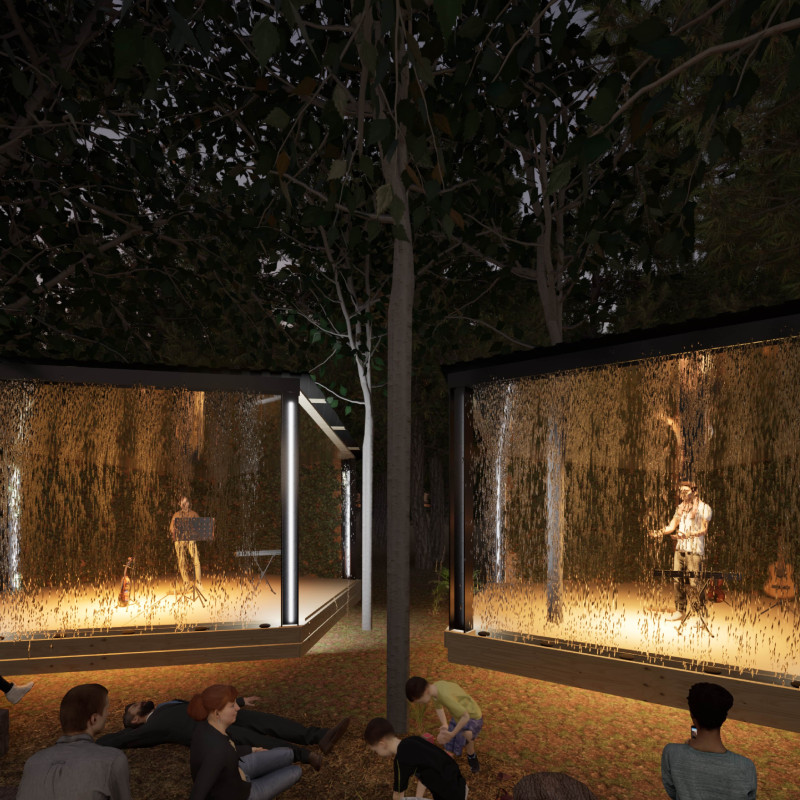5 key facts about this project
This architectural endeavor represents not only a physical structure but also a conceptual framework for how spaces can facilitate interaction, well-being, and sustainability. The primary function of the project is to serve as a versatile multipurpose facility, accommodating both community gatherings and private events. This dual functionality is evident in the layout, which features flexible spaces that can be reconfigured to accommodate a range of activities.
Key design elements include an open floor plan that encourages movement and connectivity, allowing users to navigate seamlessly between indoor and outdoor environments. Large windows and strategically placed openings flood the interior with natural light, creating a warm and inviting atmosphere. The choice of materials plays a critical role in the project's expression; it incorporates local stone, reclaimed wood, and energy-efficient glazing. This material selection not only reflects sustainability practices but also demonstrates an intention to root the building within its locale, integrating it into the landscape visually and contextually.
Among the unique design approaches adopted in this project is the emphasis on biophilic design principles. By incorporating greenery into both the facade and interior spaces, the architecture fosters a connection with nature that enhances user experience and promotes well-being. Green walls and landscaped terraces not only serve aesthetic purposes but also improve air quality and reduce heat gain, showcasing a commitment to environmental stewardship.
The exterior façade is particularly noteworthy, characterized by a rhythmic interplay of solid and void, with projecting elements that create dynamic shading and visual interest. This thoughtful design choice not only enhances the thermal performance of the building but also contributes to the overall architectural language of the project. The integration of outdoor spaces through balconies and terraces allows for continuity between indoor and outdoor areas, facilitating a connection to the environment.
Details such as the careful selection of hardware and fixtures further underscore the meticulous attention to craftsmanship within the architectural design. The collaborative efforts between architects, engineers, and local artisans have resulted in a cohesive and well-executed project that honors both modern techniques and traditional craftsmanship.
The overall design aims to foster a sense of community, inviting participation and interaction among its users while being respectful of its surroundings. It serves as a testament to how architecture can influence social dynamics and promote community engagement. By creating spaces that are not only functional but also inspiring, the project encourages a deeper connection to both the environment and the people who use it.
For those interested in a deeper analysis of the project, including architectural plans, architectural sections, and various architectural ideas, a thorough review of presentation materials will offer further insights into the innovative design approaches and thoughtful execution that characterize this architectural work. The exploration of these elements may reveal the full scope of the project and the intent behind its design, providing a comprehensive understanding of its impact within the urban fabric.


























